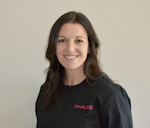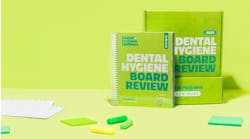Communication is essential to sharing ideas, expressing ourselves, and building relationships. When communication is denied, it can be incredibly damaging to our sense of self-worth, understanding of belonging, and ability to connect with the people around us. Refusing communication is a form of silencing, and silencing is a form of oppression that can have long-lasting, harmful effects.
We must recognize communication as an essential human right and strive to create an environment where it can be freely and safely shared. In one cross-sectional study, those who could hear were nearly two times more likely to secure appointments at 445 clinics than were simulated patients who were deaf. Among 80 unsuccessful requests made by simulated patients who were deaf, 48% were associated with a request for interpretation.1
As a deaf person, I experienced discrimination and a lack of empathy as a dental patient growing up. It was challenging to feel respected and understood in the midst of minor things, such as having my name called out in the waiting room and being unable to understand treatment options and aftercare instructions. I often felt anxious in the chair after repeatedly telling my provider, “I have no idea what you're saying.” Back then, I didn't have the voice I do today. If there is one thing I could tell my younger self, it would be to leave when things get uncomfortable.
Read more about Amanda Zubricki: RCC Spotlight: Amanda Zubricki, BS, RDH, That Deaf RDH
Imagine hearing muffled voices, not knowing what's going on inside your mouth, why you're wet, why there are loud noises, why you're bleeding—the list could go on and on. Technology wasn't great then, and my mother would have to call to make my appointments, as no one was using email or text. Fast-forward to my twenties; I tried a new dental office in a new state, only this time, it was worse. I informed them of my hearing loss and my visual cue needs, and the next thing I knew, I had three cavities out of nowhere.
When I asked them to show me, they kept their masks on. When I asked them to write down an explanation, they were very brief, not elaborating on the details of the treatment. The dental assistant yelled in my ear, even after I repeatedly explained that I don't hear that way. That day, I felt I had no choice but to go with the treatment I thought I didn't need. I felt lost, judged, and intimidated, and forced to sit in the dental chair. I only feel more empowered now because my goal is to educate others. No one should have to experience this feeling of oppression and isolation.
Last year, there was a deaf woman who was told there would be an interpreter at her appointment. When she arrived, no one was there for her. She had seven teeth pulled without her informed consent.2 This alone violates the Americans with Disabilities Act. It requires that title II entities (state and local governments) and title III entities (businesses and nonprofit organizations that serve the public) communicate effectively with people with communication disabilities. The goal is for communication with people with disabilities to be just as effective as communication with people without disabilities.3
Hearing loss and communication
There are many types of hearing loss. After a hearing test, an audiogram will show the results. Audiologists use this graph to measure a person’s ability to hear different frequencies of sounds. The audiogram plots the softest level of sound heard at different frequencies. The intensity of the sound is measured in decibels. The higher the decibel level, the louder the sound. Audiograms can be used to diagnose hearing loss and other hearing-related issues.
Deaf people can use either lip-reading or American Sign Language (ASL) to communicate. Lip-reading is a visual skill that allows individuals who are deaf or hard-of-hearing to understand speech by reading the shape, position, and movement of a person's lips. According to Medscape, only about 30% to 45% of English can be understood through lip-reading alone.4 Lip-reading is a challenging skill to master, requiring a deep level of concentration and knowledge of the English language to understand only a fraction of what is being said. However, it is an excellent skill to possess and can be extremely helpful for those who are deaf or hard-of-hearing.
Background noise and other distractions can also make it challenging to fully understand what is being said. It is essential to be patient and understanding when talking to someone who is deaf, as they are likely making an extra effort to communicate with you. ASL is a language that uses hand gestures, facial expressions, and body language to communicate. Lip-reading and ASL are equally valid forms of communication for deaf people that can be used interchangeably depending on the situation.
The impact of unequal care
Researchers found that patients with disabilities continue to experience unequal care access impacted by provider discrimination and implicit bias, even 30 years after the passage of the Americans with Disabilities Act prohibiting health-care discrimination based on disability status.5 Mental health awareness is essential when treating dental patients, especially those with hearing loss. Studies have shown that people with hearing loss are more likely to experience psychological distress, depression, and anxiety.6
As a dental professional, it's essential to be aware of the potential impact of hearing loss on a patient's mental health and to provide tailored care. This could include slowing conversations, using visual aids, and checking in with the patient about their feelings.
How you can help
A cross-sectional study by the National Institute of Health found that deaf participants who had direct ASL communication with their primary care provider were more likely to access preventive care.7 Learning basic ASL has the potential to open so many doors, even if all you learn is to sign your name or ask, “How are you doing?” ASL is a wonderful way to connect with people from all walks of life, and it can foster understanding and acceptance. It is incredibly versatile and can be used in a wide variety of contexts, from casual conversations to more formal settings.
One of the best tips for accommodating patients with hearing loss in health care is to ensure that the patient's hearing needs are assessed and documented at the start of the visit. This should include a review of their hearing devices and a discussion of any challenges they may face with their hearing. Additionally, it is essential to provide visual aids whenever possible to assist with communication.
These could include written materials, gestures, and/or facial expressions. It is also crucial that the environment is quiet and free from distractions and that any background noise is minimized. You can also provide a copy of the patient's notes so they can refer to them after their appointment. Finally, using technology to make the process more efficient can also help to reduce any negative feelings.
Hearing loss can cause a range of emotions, such as isolation, frustration, and depression. Dental health is closely related to overall health, and mental health is integral to well-being. People with hearing loss may experience unique challenges when seeking dental care. Poor communication between dentist and patient, fear of the unknown, discomfort in the dental chair, and the inability to hear instructions can all lead to heightened anxiety and stress. With the proper support and resources, individuals with hearing loss can have successful dental visits and maintain good overall health.
Editors note: The Americans with Disabilities Act was signed into law on July 26, 1990.
Editor's note: This article appeared in the July 2023 print edition of RDH magazine. Dental hygienists in North America are eligible for a complimentary print subscription. Sign up here.
References
- Schniedewind E, Lindsay RP, Snow S. Comparison of Access to Primary Care Medical and Dental Appointments Between Simulated Patients Who Were Deaf and Patients Who Could Hear. JAMA Netw Open. 2021;4(1):e2032207. doi:10.1001/jamanetworkopen.2020.32207
- DOJ and Des Moines, Washington, dental clinic resolve complaint over Americans with Disabilities Act (ADA) violation. (2022, October 18). Department of Justice. Retrieved February 6, 2023, from https://www.justice.gov/usao-wdwa/pr/doj-and-des-moines-washington-dental-clinic-resolve-complaint-over-americans
- ADA Requirements - Effective Communication. (2014, January 31). ADA.gov. Retrieved February 6, 2023, from https://www.ada.gov/resources/effective-communication/#overview
- Chong, C., Sadler, G. R., Fullerton, J. T., & Stohlmann, P. D. (n.d.). Communication Strategies for Nurses Interacting With Patients Who Are Deaf. Medscape. Retrieved February 6, 2023, from https://www.medscape.com/viewarticle/569802_6
- Rodriguez, S. (2022, October 10). Discrimination Shapes Care Access for Patients with Disabilities. PatientEngagementHIT. Retrieved February 6, 2023, from https://patientengagementhit.com/news/discrimination-shapes-care-access-for-patients-with-disabilities
- Bigelow RT, Reed NS, Brewster KK, et al. Association of Hearing Loss With Psychological Distress and Utilization of Mental Health Services Among Adults in the United States. JAMA Netw Open. 2020;3(7):e2010986. Published 2020 Jul 1. doi:10.1001/jamanetworkopen.2020.10986
- Impact of Communication on Preventive Services Among Deaf American Sign Language Users. (2022, August 10). National Institute of Health. Retrieved February 6, 2023, from https://www.ncbi.nlm.nih.gov/pmc/articles/PMC3117257/pdf/nihms296192.pdf







